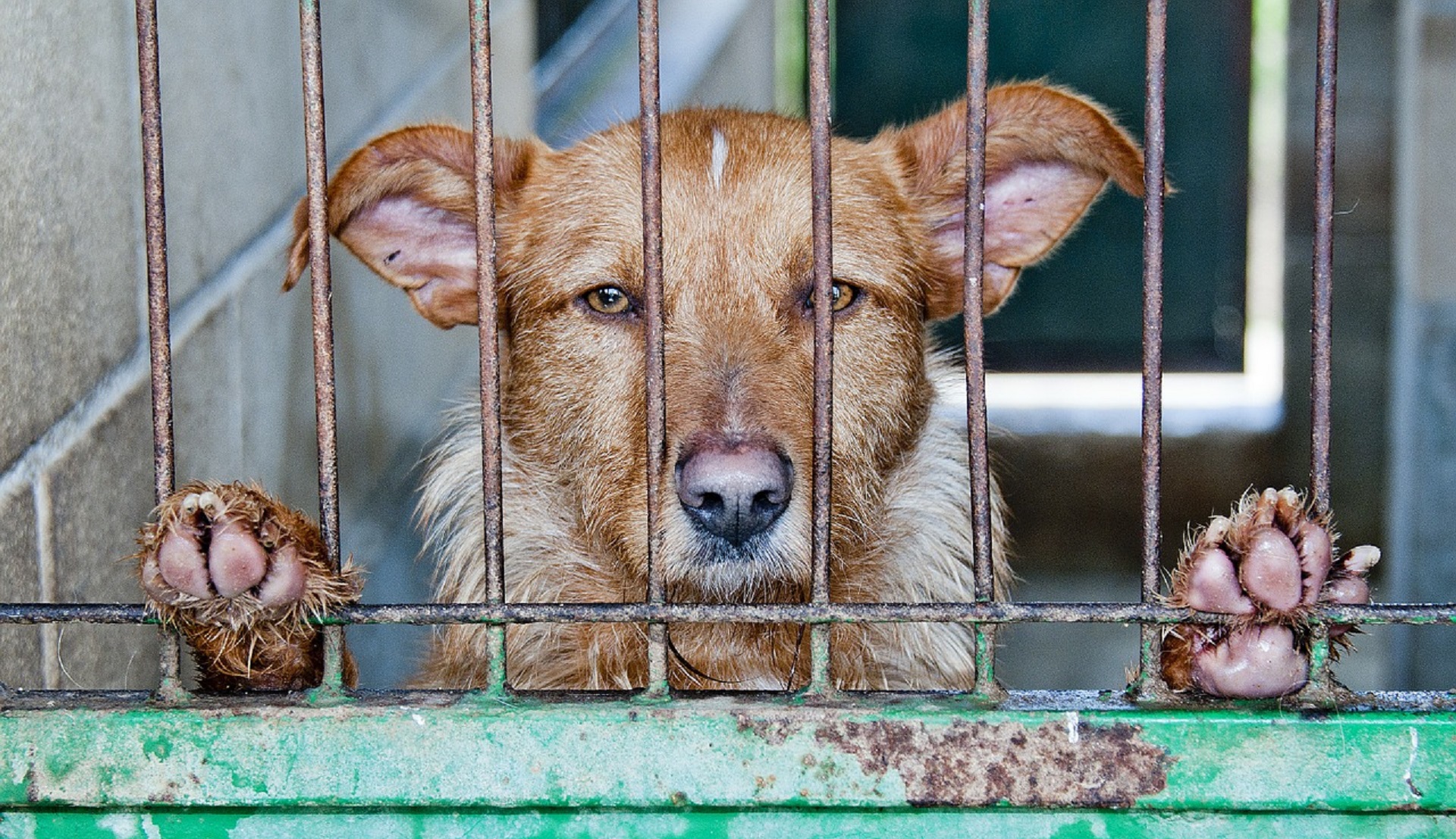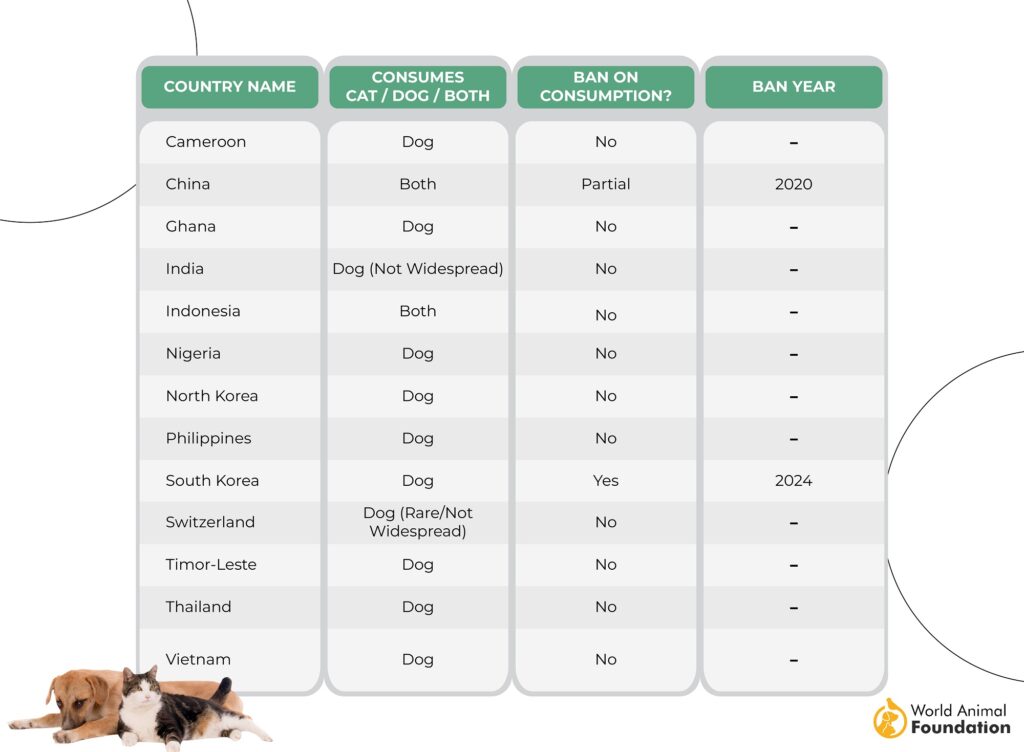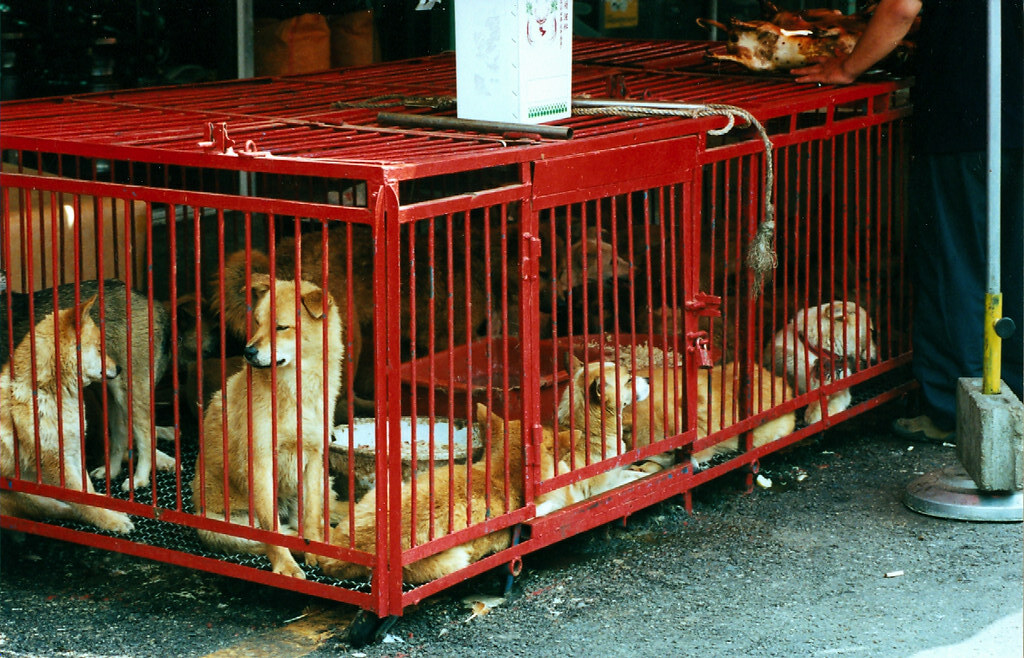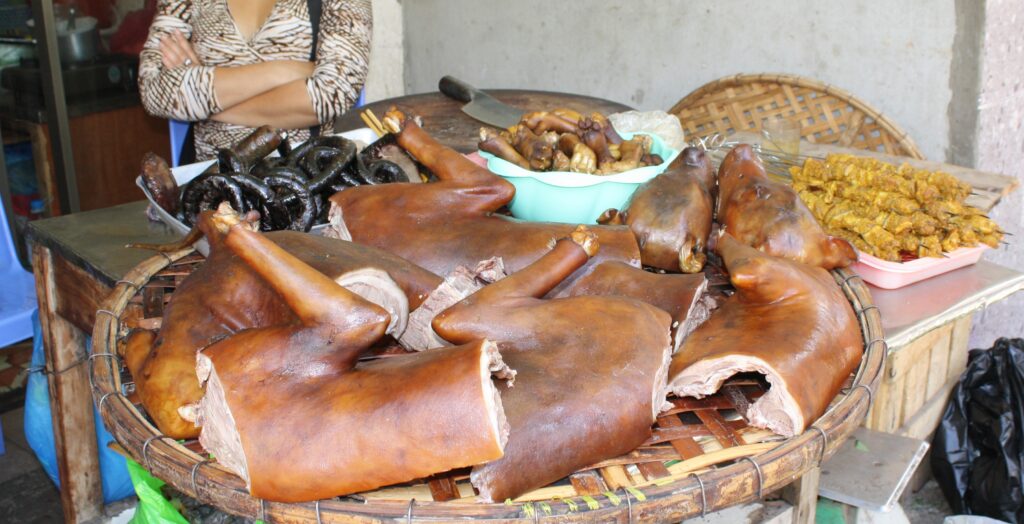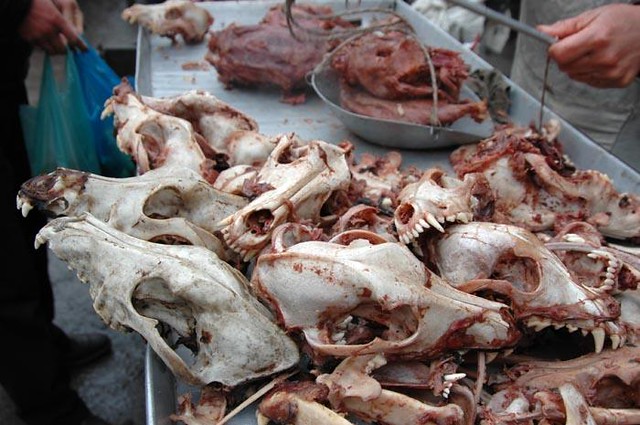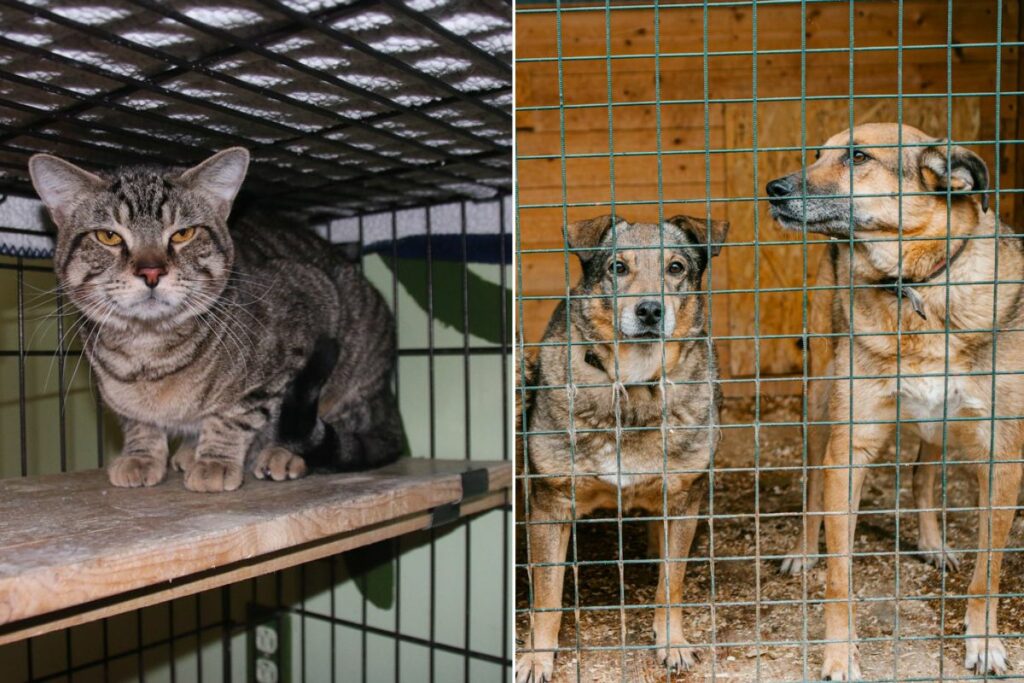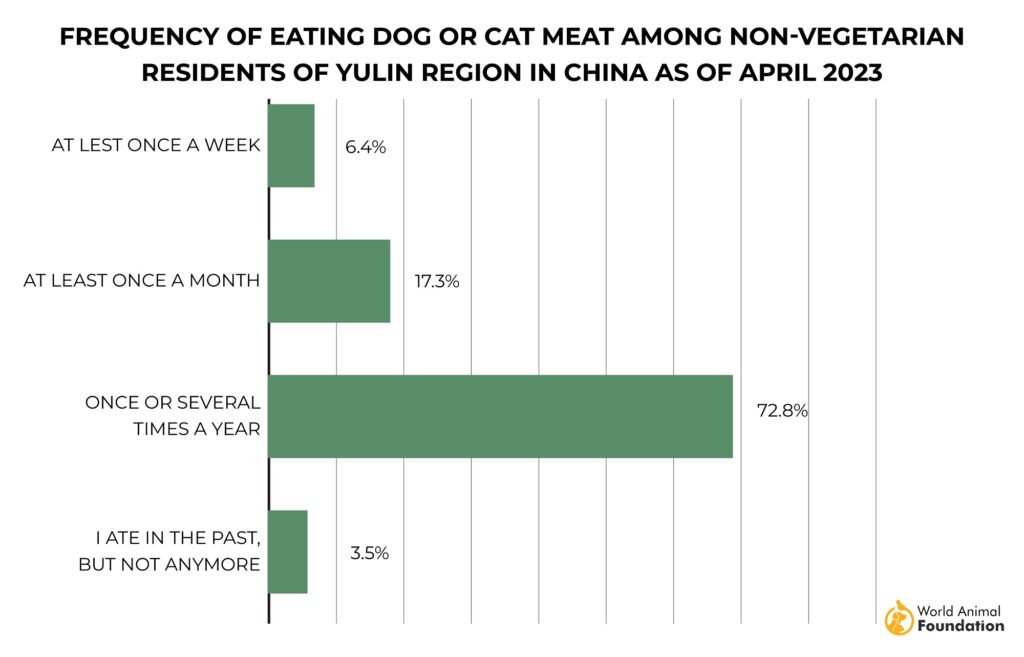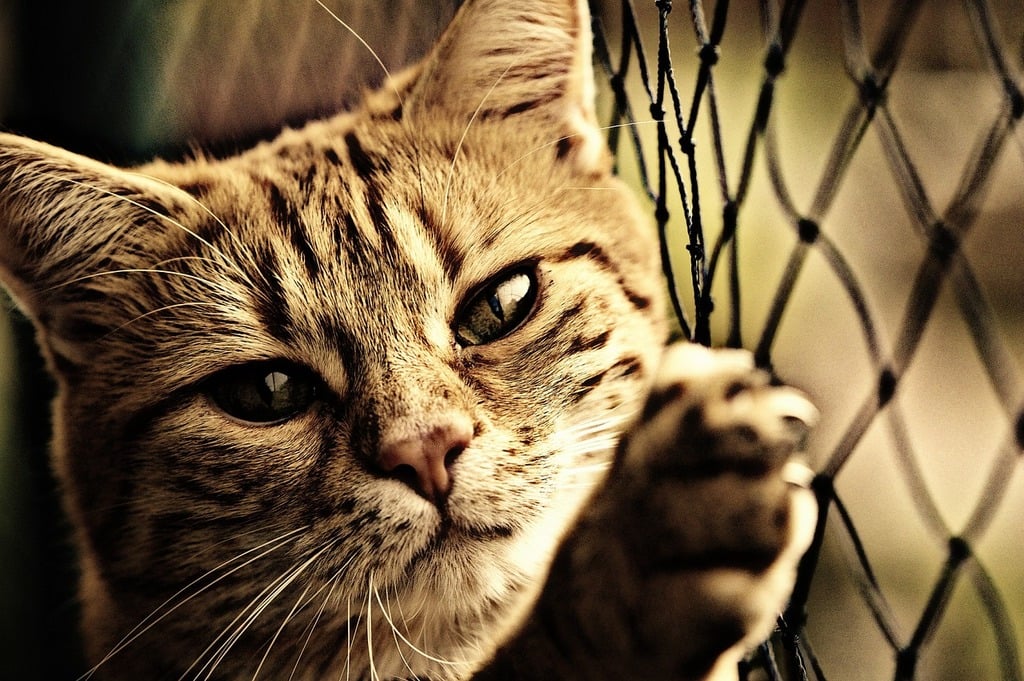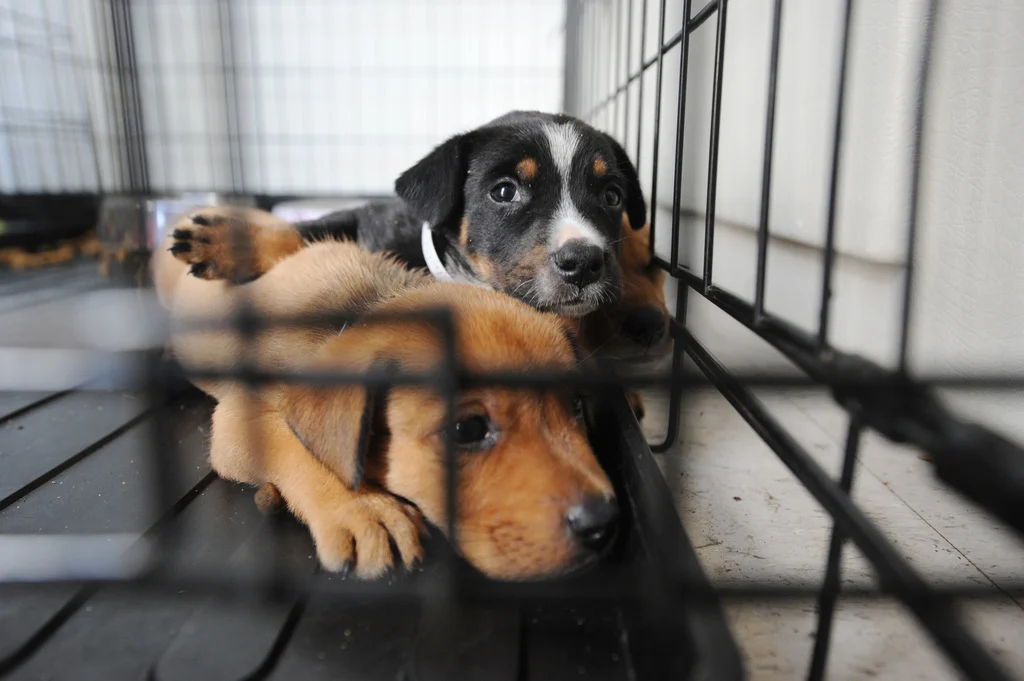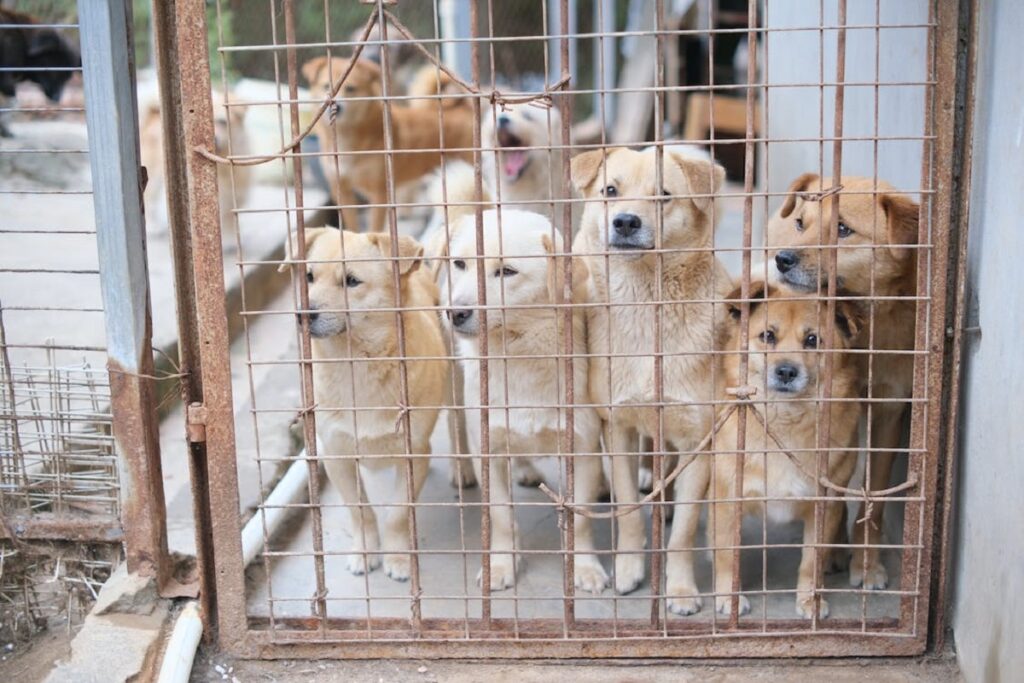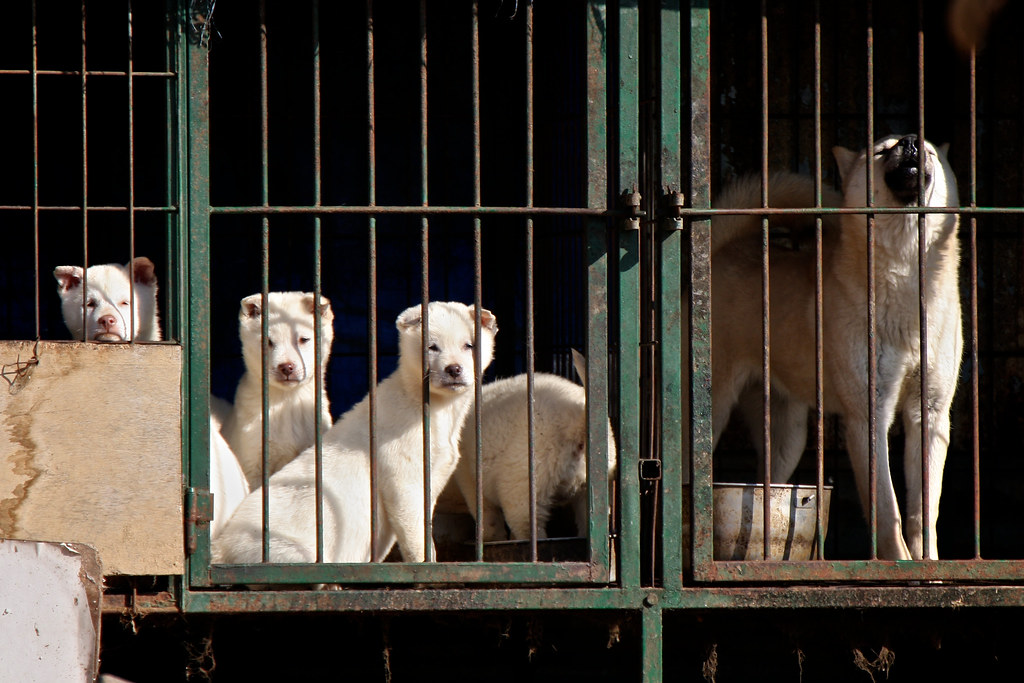While dog and cat meat consumption has declined globally, it persists in some regions in 2024. Certain countries, primarily in parts of Asia and Africa, still maintain cultural practices or face economic hardships that contribute to this controversial dietary choice. Understanding the complex interplay of tradition, necessity, and evolving societal attitudes surrounding dog and cat meat consumption is crucial for fostering respectful dialogue and supporting sustainable change. This exploration delves into the regions where this practice continues, examines the reasons behind it, and considers the ongoing efforts to promote animal welfare.
Kind of startling, isn’t it? Unless you live in one of these countries. There are two sides here…The side that thinks, “Cultures are different. What’s normal for one may not be for another.” Or you might think, “What the hey!”
Countries like China and Vietnam have long histories of consuming dog meat. And think about this: Some Americans think this tradition is repulsive, while other cultures or religions may think what people in America eat is. Especially in India, where Hindus and Buddhists consider it shameful or an insult to their religion to eat cattle meat. Is there a difference?
As a staunch advocate for animals, we could never promote the practice of eating dogs or cats. But every story has two sides, and we’re here to give you both.
Let’s get into different cultures and traditions and why they’re so dug into what’s on their plates.
Brief Background
World Animal Foundation is a leading platform dedicated to animal rights, responsible pet ownership, and compassionate awareness. We want to create a more humane world and give you animal knowledge on how to be a responsible, loving pet guardian – especially for the domesticated ones.
We needed to draw our line clearly in the sand to communicate our stance on the issue. But we also pull for people. It’s important to recognize the existence of so many cultures and their practices and respect that people are different. That doesn’t mean, however, that we can’t have our own opinions and beliefs on this issue.
People eat dog meat for several reasons:
- For sustenance/nutrition
- For perceived health benefits
- Believed to help men’s libidos
- It’s affordable
- Societal pressure
- The only meat available
- To follow tradition
- Believed to keep them warm
- For religious festivals
Since eating dog and cat meat has been a staple for many for centuries, it’s quite a touchy subject in many countries. The topic doesn’t come up much in America since, culturally, we don’t eat dog meat because they’re our pets, among other reasons. In other cultures, like Asia, it’s becoming less popular, especially among younger generations.
In a different part of the world, a 2022 poll taken in South Korea suggests:
- 87.5% do not eat dog meat
- 56% support a ban
It appears that older generations consume the most dog meat while the younger refuse to unless those in their homes do. Although there’s a glaring rift, those who partake are mostly respected anyway by those who are against it.
Depending on who you’re talking to, Vietnam is a Second or Third world country, and in these mid to poor economies, dogs and cats are often not humanely treated during the killing process. This is one of the things that rankles animal advocates the most.
Speaking of which, we must give kudos to the efforts and successes of stopping the practice (or it has become illegal anyway) in Hong Kong, Taiwan, the Philippines, and some cities in China and Indonesia.
At the beginning of 2024, South Korea was added to this list, and TIME Magazine says, “Starting in 2027, those who breed, butcher, distribute, or sell dog meat for human consumption can be jailed up to three years or fined up to $22,800.”
This is largely due to societal pressure, like animal rights advocates who have worked tirelessly to stop the killing of dogs and cats for human consumption.
Humane groups have done two major things:
- Turned up the global spotlight on the dog meat trade, which puts pressure on the government
- Educated millions of Chinese citizens on the cruelty of the trade
The cruelties and horrendous activities of the dog and cat trade for meat consumption are tragic. These animals are grabbed off the streets or stolen from homes only to die from barbaric tactics.
Let’s now look at some other countries…
What Countries Eat Dogs & Cats
In Asia, an Estimated 30 Million Dogs Are Killed Annually for Human Food. (Humane Society)
This is a staggering statistic for those of us in countries that don’t participate in companion animal consumption. The practice in Asia is generally brutal since there are little to no animal rights laws protecting these animals, and the process often involves brutality and criminal activity.
China Is the World’s Largest Consumer of Dog Meat. (Humane Society)
It cannot be ignored that dogs are often crammed into cages and vehicles where they suffocate to death or die in other horrific ways.
The Humane Society International (HSI) says, “In China and Vietnam, dogs are usually beaten to death with a metal pipe and then bled out from a cut to the throat or groin, but they can also be hanged, or—less commonly—thrown conscious into large drums of boiling water.”
Vietnam Is the Second Largest Dog Meat Consumer in the World. (Humane Society)
Around 5 million dogs and cats are killed yearly for consumption. About 80,000 of those are imported from Thailand, Laos and Cambodia. These animals often travel for days or weeks and are sick, injured, starved, and severely dehydrated.
Dog Meat Is Eaten for Cultural Rituals in About 20 African Nations. (SBS News)
Nigeria is the largest consumer of dog meat on the continent. They market it as a cure for malaria, protection against witchcraft, and even sacrifice dogs during a major festival.
In 2014, 3% of Rural Switzerland Consumed Dog Meat as Jerky or Sausages. (hyaenidae.org)
Eating dog meat in Europe is generally frowned upon, yet this is still the case in Switzerland. In 2014, hundreds of thousands of people in Switzerland ate cat and dog meat. It was a Christmas tradition. According to Newsweek, 3% of Swiss people ate cat or dog meat, and 80% of them were farmers in the Lucerne, Appenzell, Jura, and Bern areas.
UK Laws Forbid the Sale and Consumption of Dog Meat. (UK Parliament)
However, there’s one caveat, or loophole, in the legislation: There is no law banning the consumption of dog or cat meat. The government says there is no evidence of it being consumed, so in their minds, a direct law forbidding it is unnecessary.
The Act of 2018, Dog and Cat Meat Trade Prohibition Bans Dog Meat Consumption in the US. (congress.gov)
In America, the bill was passed where no person may:
- Knowingly slaughter a dog or cat for human consumption
- Knowingly ship, transport, move, deliver, receive, possess, purchase, sell, or donate—a dog or cat to be slaughtered for human consumption
- The act allows an exception for Indian tribe’s rituals involving dog meat consumption. (source)
The law was activated in the provisions of the Farm Bill.
Consuming Dog and Cat Meat Is Not Illegal in Canada. (change.org)
Restaurants that want to serve the meat must source it from a licensed meat plant operator, and there aren’t any that slaughter dogs in Canada.
Do Chinese People Eat Dogs or Cats
In China, 10 Million Dogs Are Slaughtered. (Humane Society)
Four million cats are slaughtered for the same purpose. Animal advocates still need to take heart, even though it’s difficult, that awareness has infiltrated China and has changed a lot of minds. Continue the good work!
Note: Around 30 million urban households have a companion animal/pet, dog, or cat, according to a 2015 survey.
In a 2023 China Survey, About 73% of Yulin Residents Ate Dog or Cat Meat. (Statista)
Less than 4% said they’d eaten a dog or cat but don’t anymore. This is a good reminder about the state of the slaughter of dogs and cats in China and that there’s a long way yet to go to stop it.
In 2020, Shenzhen and Zhuhai Banned Dog and Cat Meat, a First in Mainland China. (Humane Society)
In Yulin, an annual dog and cat meat festival called Lychee and Dog Meat Festival was canceled in 2020. (Yay!) It had been widely protested for years by local and international animal advocates.
China Leads in Fur Production, Consumption, and Export, Primarily With Raccoon Dogs. (Actasia)
Although the US and other countries have become increasingly against wearing animal fur, “In 2016, China’s fur industry was worth an estimated $55.98 billion,” says Actasia. Currently, raccoon dogs are seen as potential intermediary hosts for COVID-19.
In China, Most People Don’t Eat Dog Meat. (Statista)
Less than 4% said they’d eaten dog or cat meat previously but not anymore. It’s almost like a dirty little secret, and when people are forced to look into the mirror, some don’t want to admit what they’re seeing.
2016 Polls Reveal That 69.5% of Chinese People Have Never Eaten Dog Meat. (Xinhuanet)
This is really depending on the area of China you’re talking about. Ten million dogs are slaughtered yearly for somebody.
In 2015, About 9 Million Chinese Supported a Proposal to Ban Dog and Cat Meat. (Animalasia)
It was, at the time, a subject that was far more popular than many other proposals on the table. But we must consider the population of China: 1.4 billion in 2020.
Thank goodness there are anti-dog and cat meat people working there: HSI’s official partner in China is called Vshine, an active and well-respected animal protection organization.
Do the People of Taiwan Eat Dog Meat or Cat Meat?
The Trade of Dog Meat Is Thriving in Taiwan. (Four Paws)
Finally, in 2014, the slaughter and consumption of dogs and cats was made illegal with the first animal welfare law in Thailand – the Cruelty Prevention and Welfare of Animal Act. You cannot kill or consume an animal that’s not considered to be part of the “human food chain.” (which includes cats and dogs).
In 2017, Taiwan Was the First Country to Ban Cat and Dog Meat. (Animal Equality)
They couldn’t buy or eat the meat and if they did, they could be fined up to $8,200.
In 1988, Taiwan voted to make it illegal to slaughter and sell dogs and cats, but consumers just went underground and still thrived commercially.
This decision made Taiwan one of the leaders of the movement against consuming dog and cat meat. There are also countries, like the US, that don’t consume companion animals but want to lead others worldwide to recognize and face the problem.
Taiwan Increased the Maximum Prison Term to Two Years and Fines to $65,000. (Animal Equality)
These punishments can be given if someone causes deliberate harm to a cat or dog. Taiwan is truly on the upswing, and other countries should take note and impose harsher legislation on offenders.
Do Koreans Eat Dogs?
South Korea Banned Dog Meat Consumption in January 2024. (Humane Society)
This subject has been in the hot seat in South Korea for quite a while. The decision has proved that when people speak up to make themselves heard and don’t give up, good things can happen. Only a small minority in the nation (pop. 52 million) still consumes dog and cat meat.
The Ban Will Make Dog Meat Sales and Consumption Illegal in 2027. (Humane Society)
Most of the dogs are raised on farms similar to puppy mills in America – endless breeding. Some are animals raised for the market or have been stolen or turned in.
Over 1 Million Dogs Are Killed To Be Eaten in Korea. (Humane Society)
President Yoon Suk Yeol, along with the first lady Kim Keon Hee are both animal lovers and were vocal critics of the dog and cat meat trade/consumption.
In 2022, 87.5% of South Koreans Didn’t Eat Dog Meat. (Humane Society)
A little over half of these people cited the practice as being cruel to animals, with the other half saying it was unsanitary. World opinions, practices, and voices matter. We see it with this issue.
Nearly 40% of South Korean Dog Meat Restaurants Have Closed in the Past Decade. (Humane Society)
Demand has always driven consumerism. So when the other side, people/activists, demand that these atrocities stop, it will usually directly affect businesses.
56% of People Supported Banning Dog Meat in South Korea. (Humane Society)
During Bok Nal, the three hottest days between July and August, 70%-80% of dog meat is consumed. This time period is when the practice is most popular.
South Korea Has 17,000 Dog Farms. (Humane Society)
Killing machines, inhumane businesses, no-conscious cruelty – These phrases could be used to describe these farms. The dogs and cats are given little food and usually no water or space (they live in cages). The extreme neglect is unbearable. Electrocution is the most common method of killing.
In November 2018, Seongnam City Closed South Korea’s Largest Dog Slaughterhouse, Taepyeong. (Humane Society)
This slaughterhouse was used for the notorious Moran dog meat market for many generations. In response to the closing, the city council of Seongnam, where the slaughterhouse was located, announced they would build a community park on the land.
Organizations like HSI have saved the day many times. In 2018, they saved 1,600 dogs and transferred them to shelters in the UK, US, and Canada. They’d also closed 13 dog meat farms.
Do Indonesians Eat Dogs
Less Than 4.5% of the Indonesian Population Consumes Dog Meat. (Humane Society)
Population 273 million in 2020. 93% of Indonesians support a nationwide ban. Go, Indonesia!
Dog theft to benefit the meat trade is rampant in the country. There have been many pet guardians who described scenarios of armed traders who came and stole their dogs.
1 Million Dogs Are Slaughtered in Indonesia. (Four Paws)
Hundreds of thousands of cats, stolen pets or strays, are also slaughtered. In 2023, Jakarta, the economic, cultural, and political center of Indonesia, told Dog Meat Free Indonesia they were drafting a regional law and associated governor’s directive that will strengthen what’s already there and actively enforce shutdowns of all cat and dog-meat organizations/operations.
Do Vietnamese Eat Dogs
Around Five Million Dogs Are Estimated To Be Slaughtered in Vietnam. (Humane Society)
…and 1 million cats in order to supply meat for human consumption. The animal cruelty is barbaric in the process.
Traders use poisoned food baits, tasers, and iron pincers to catch dogs, while spring-loaded snares are used for cats.
The Demand Has Led to Illegal Trade From Neighboring Countries, Including Thailand, Cambodia, and Laos. (caawo.org)
Vietnam’s Asia Canine Protection Alliance has made the point that eating dog meat is dangerous to humans since some harmful illnesses can be zoonotic (passed from animals to humans).
What We Can Do About the Dog and Cat Meat Trade
- Talk about it. Many people don’t even realize this still goes on anywhere in the world. Education is key, and you never know the sparks you might be lighting when someone hears about it.
- Visit and sign the Species Unite petition to phase out dog meat in Hanoi.
- Contact governments of countries that still don’t ban these practices to encourage them to.
- If you’re emotionally and mentally prepared to, visit websites that speak out against the dog and cat meat trade. Visit a good one to get the facts. (Warning: Graphic images)
- Contact Dog Meat Free Indonesia to see what you can do to help. There’s also a petition there to sign.
FAQs
Is It Illegal To Eat Dogs?
It is legal in many countries, but progress is being made:
- 1998 – Taiwan made the slaughter and sale of cats and dogs illegal.
- 2017 – Taiwan was the first country to ban cat and dog meat.
- 2018 – The US followed suit and created the law to ban dog meat consumption (except for American Indian cultures).
- UK laws forbid the sale and consumption of dog meat.
- 2024 – North Korea made dog meat sale and consumption illegal.
These countries lead the way for the rest of the world to sit up and recognize that eating or selling dogs and cats (for consumption) is cruel, barbaric, and indefensible.
What Cultures Eat Dogs?
- Asian
- Vietnamese
- Philippines
- Nigerian
- Guana
And more.
Why Do Some Cultures Consume Dog Meat While Others Consider It Taboo?
Just as most Americans were raised with either a dog or a cat in the household, some people in certain cultures were raised in cultures that eat dogs and cats. To them, it’s natural, and there’s nothing wrong with it.
But animals are sentient beings. They feel pain and have emotions. It’s why I’m a vegetarian…For the animals and the brutality they face when they’re killed in a pen, usually after being treated horrifically.
Final Thought
I love shining a spotlight on issues like this that happen all across the world… Issues that need whistleblowers. Eating cats and dogs is an atrocity and one that we should never close our mouths about. Sure, in some cultures, it’s expected and accepted, but does that make it right?
Animal cruelty shows its face in many forms, and this is one of them. Hopefully, you’ve learned why and how dogs and cats are treated this way by the dog meat industry in many countries.
One of our passions is to educate people about animals and how to treat them humanely. I hope we’ve done just that.
While dog and cat meat consumption persists in some parts of the world in 2024, notably China, Vietnam, and South Korea, growing awareness of animal welfare and food safety concerns is driving change. Legislation and activism are increasingly challenging these practices, with some regions banning or restricting the trade altogether. However, deeply ingrained cultural traditions and economic factors present significant obstacles to complete eradication. Ultimately, a combination of legal measures, public education, and economic alternatives will be crucial to ending the consumption of dog and cat meat globally.

